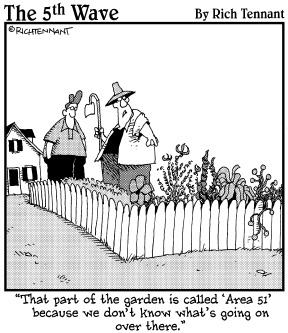Vegetable Gardening (131 page)

You also can freeze some vegetables, like beans or peas, whole. But usually you have to blanch them first to preserve their color and texture.
Blanching
is simply the process of dipping the vegetables in boiling water for a minute or two and then placing them in ice water to cool them off. Then you dry the vegetables with a towel and freeze them in labeled plastic freezer bags. Simple.
 Drying:
Drying:
This technique can be pretty easy, but it must be done properly to prevent spoilage. Basically, you dehydrate the vegetables by laying them out in the sun to dry, by slow baking them in the oven, or by using a commercial dehydrator, which you can buy in most mail-order catalogs (see the appendix). In hot, sunny climates like California, you can dry ‘Roma' tomatoes by slicing them in half and laying them out in the sun on a screen.
 Spoilage is always a concern, so before drying your vegetables, you may need to get some additional information. You usually need to store dried vegetables in airtight containers; lidded jars work well. You can use dried vegetables to make soups and sauces.
Spoilage is always a concern, so before drying your vegetables, you may need to get some additional information. You usually need to store dried vegetables in airtight containers; lidded jars work well. You can use dried vegetables to make soups and sauces.
 Canning:
Canning:
Of all preserved vegetables, I like the taste of canned tomatoes the best. Nothing tastes better in the middle of winter. But canning is a delicate and labor-intensive procedure that can require peeling, sterilizing jars, cooking, boiling, and a lot of other work. I usually set aside a whole weekend to can tomatoes and other veggies. I don't want to discourage you, but you need some good recipes, some special equipment, and probably some help if you want to can vegetables.
 For help with freezing, drying, and canning vegetables and herbs, I like to refer to the bible,
For help with freezing, drying, and canning vegetables and herbs, I like to refer to the bible,
The Ball Blue Book of Preserving
(Alltrista Consumer Products, 2004). Or you can check out
Canning and Preserving For Dummies
by Karen Ward. Your local Cooperative Extension Service office also is a good source of information on preserving vegetables. Finally, I have come across many great Web sites on home food preservation as well. Here are a few to try:
 Home Food Preservation (
Home Food Preservation (
foodsafety.psu.edu/lets_preserve.html
)
 National Center for Home Food Preservation (
National Center for Home Food Preservation (
www.uga.edu/nchfp
)
 Pick-Your-Own (
Pick-Your-Own (
www.pickyourown.org
)
Saving Vegetable Seeds
If you have a favorite vegetable variety that's suited to your tastes or growing conditions, or if you have a particular plant that thrives in your garden, you can save those plants' seeds and possibly even improve their qualities to better fit your needs. If you collect seeds from only the best plants year after year, the qualities that you want will eventually be more present and predictable.
 Hybrid seeds won't come true to type (the exact same plant) if you collect the seeds and try to grow them a year later. Open-pollinated varieties are more likely to give you what you expect.
Hybrid seeds won't come true to type (the exact same plant) if you collect the seeds and try to grow them a year later. Open-pollinated varieties are more likely to give you what you expect.
Saving your own seeds also may be the only way to keep some heirloom varieties alive. Some heirlooms are difficult or impossible to obtain, but they have something special to offer, such as adaptation to a specific climate, certain types of disease resistance, or especially good flavor. Heirloom varieties represent a reservoir of genes that plant breeders can use to improve present and future crops.
The appendix lists organizations dedicated to heirloom varieties. Here are some Web sites that provide information on how to save some of your own vegetable seeds:
 International Seed Saving Institute (
International Seed Saving Institute (
www.seedsave.org/issi/issi_904.html
)
 Cornell University (
Cornell University (
counties.cce.cornell.edu/suffolk/HortFactSheets/factsheets/How%20to%20Save%20Vegetable%20Seeds.pdf
)
Part IV

In this part . . .
This part is all about quick lists of handy gardening tools and methods of season extending. Chapter 20 goes into details about the ten best tools to use in the garden — what's essential and what's fun to have. In Chapter 21, I talk about nearly ten good ways to extend the gardening season with row covers, cloches, cold frames, and greenhouses. It's for those gardeners who can't get enough of growing their own fresh produce.
